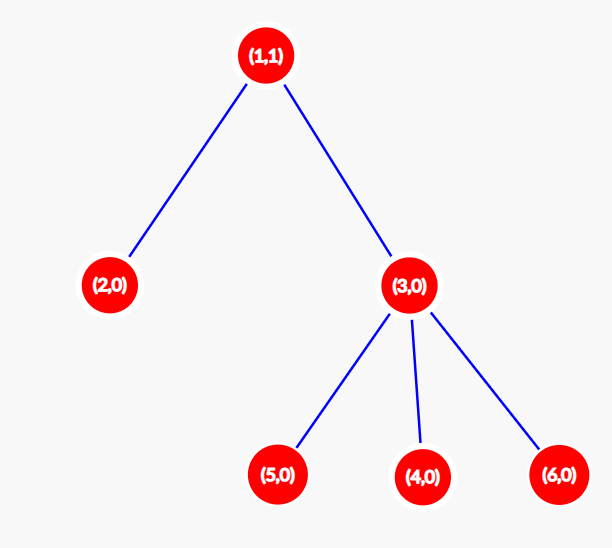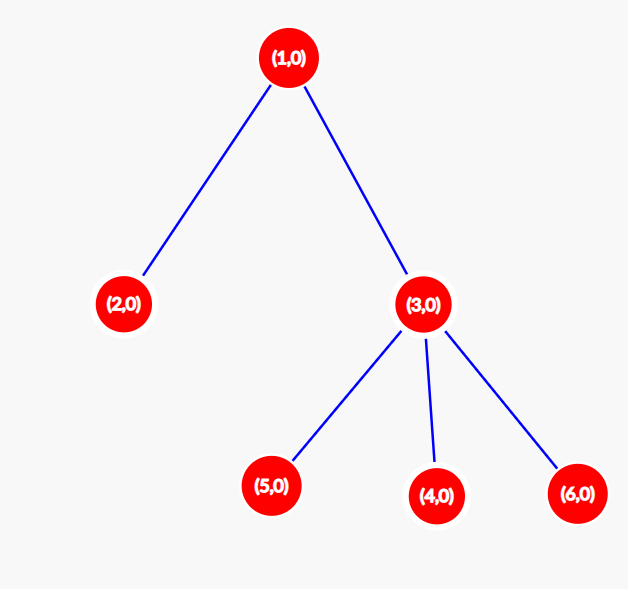CF1777D.Score of a Tree
普及/提高-
通过率:0%
AC君温馨提醒
该题目为【codeforces】题库的题目,您提交的代码将被提交至codeforces进行远程评测,并由ACGO抓取测评结果后进行展示。由于远程测评的测评机由其他平台提供,我们无法保证该服务的稳定性,若提交后无反应,请等待一段时间后再进行重试。
题目描述
You are given a tree of n nodes, rooted at 1 . Every node has a value of either 0 or 1 at time t=0 .
At any integer time t>0 , the value of a node becomes the bitwise XOR of the values of its children at time t−1 ; the values of leaves become 0 since they don't have any children.
Let S(t) denote the sum of values of all nodes at time t .
Let F(A) denote the sum of S(t) across all values of t such that 0≤t≤10100 , where A is the initial assignment of 0 s and 1 s in the tree.
The task is to find the sum of F(A) for all 2n initial configurations of 0 s and 1 s in the tree. Print the sum modulo 109+7 .
输入格式
Each test contains multiple test cases. The first line contains the number of test cases t ( 1≤t≤105 ). The description of the test cases follows.
The first line of each test case contains n ( 1≤n≤2⋅105 ) — the number of nodes in the tree.
The next n−1 lines of each test case contain two integers each — u , v indicating an edge between u and v ( 1≤u,v≤n ).
It is guaranteed that the sum of n over all test cases does not exceed 2⋅105 .
输出格式
Output the sum modulo 109+7 for each test case.
输入输出样例
输入#1
1 6 1 2 1 3 3 4 3 5 3 6
输出#1
288
说明/提示
Let us find F(A) for the configuration A=[0,1,0,0,1,1] ( A[i] denotes the value of node i ). Initially (at t=0 ) our tree is as shown in the picture below. In each node, two values are shown: the number and the value of this node. S(0) for this configuration is 3 .
 At t=1 the configuration changes to [1,0,0,0,0,0] . The tree looks as shown below. S(1)=1 .
At t=1 the configuration changes to [1,0,0,0,0,0] . The tree looks as shown below. S(1)=1 .
 At t=2 the configuration changes to [0,0,0,0,0,0] . The tree looks as shown below. S(2)=0 .
At t=2 the configuration changes to [0,0,0,0,0,0] . The tree looks as shown below. S(2)=0 .
 For all t>2 , the graph remains unchanged, so S(t)=0 for all t>2 . So, for the initial configuration A=[0,1,0,0,1,1] , the value of F(A)=3+1=4 .
For all t>2 , the graph remains unchanged, so S(t)=0 for all t>2 . So, for the initial configuration A=[0,1,0,0,1,1] , the value of F(A)=3+1=4 .
Doing this process for all possible 26 configurations yields us an answer of 288 .